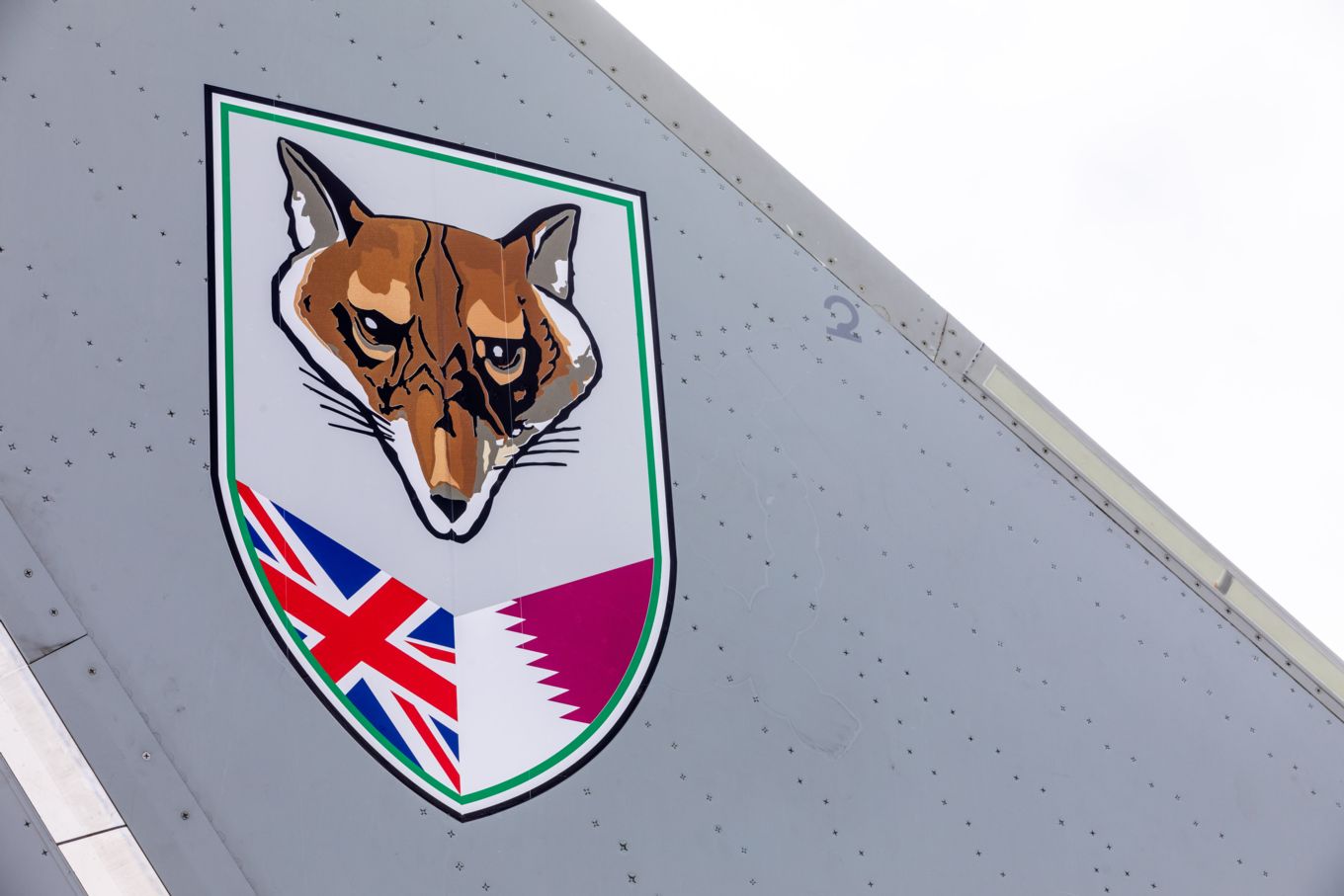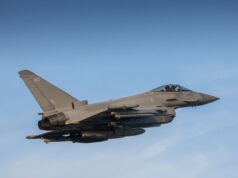After over a decade of development, the first squadron of F-35B’s is officially operational.

The aircraft was declared operational by Gen. Joe Dunford, Marine Corps commandant in an announcement at the end of last month.
“I am pleased to announce that VMFA-121 (Marine Fighter Attack Squadron 121) has achieved initial operational capability in the F-35B, as defined by requirements outlined in the June 2014 Joint Report to Congressional Defense Committees. VMFA-121 has ten aircraft in the Block 2B configuration with the requisite performance envelope and weapons clearances, to include the training, sustainment capabilities, and infrastructure to deploy to an austere site or a ship. It is capable of conducting close air support, offensive and defensive counter air, air interdiction, assault support escort and armed reconnaissance as part of a Marine Air Ground Task Force, or in support of the Joint Force.”
In declaring it operational, Dunford described the advanced plane as “capable of conducting close air support, offensive and defensive counter air, air interdiction, assault support escort and armed reconnaissance.”
He added that “we still have work ahead to deliver the full warfighting capability required by all three services and our partners”. The US Marine Corps calls the F-35 the “future of tactical aviation,” expecting it to eventually replace three legacy platforms currently in use: the AV-8B Harrier, the F/A-18 Hornet and the EA-6B Prowler.
The United States Marine Corps has trained and qualified more than 50 F-35B pilots and certified about 500 maintenance personnel to support for the F-35B.
VMFA-121’s transition will be followed by Marine Attack Squadron 211 (VMA-211), an AV-8B squadron, which is scheduled to transition to the F-35B in 2016. In 2018, VMA-311 will conduct its transition to the F-35B.

The news follows some, now debunked, controversy. It had been widely reported in the media over the month that an F-35 was outperformed by an F-16, the truth was quite different. The accusations of the F-35 being inferior may seem shocking at first but it should be noted that the specific F-35 involved in the often cited test was ‘AF-2′, this airframe is designed for flight testing, it’s designed to fly in certain restricted flight envelopes. It does not feature the majority of systems present in frontline aircraft. The aircraft, due to it being a test aircraft, had also not had the software installed that is required to use the sensors and mission systems that would be used in combat. Additionally, ‘AF-2′ does not feature the radar-absorbent material coating that operational aircraft have.
The cost of the aircraft has also started falling, bringing to an end the slew of criticism about cost. Lt. Gen. Chris Bogdan, the head of the F-35 joint program office, had this to say.
“It is a fact this program is over budget from 2001’s baseline. It’s just true. We will never underrun that number. We will never save that money. It’s gone. What matters is since that time, what’s happened to the cost on the program? It’s gone down, not gone up. Judge the program today, not where it’s been, but where it is and where it’s going.”
Bogdan also pointed out that last years US Government selected acquisition report (SAR) noted reducing procurement costs, down by $3 billion. The average cost-per-unit in low-rate initial production lots six, seven and eight, the last three lots on contract, have fallen. The below figures also include engines and adjust for inflation.
F-35A conventional takeoff and landing model: $117 million, $112 million, $108 million.
F-35B “jump-jet” model: $145 million, $137 million, $134 million.
F-35C carrier variant: $134 million, $130 million, $129 million.
The F-35 Joint Program Office (JPO) commented:
“Affordability is the number one priority for the F-35 program and this year’s report reflects another year with significant cost reductions and we’re not stopping there. We will continue to drive costs out of the program. The F-35 Joint Program Office has a disciplined approach to analysing and reducing sustainment costs. Ongoing activities include conducting a sustainment business case analysis and operating a cost war room to find program savings and attack operational, sustainment and total ownership costs.
F-35 unit recurring flyaway costs have been going down with each successive lot of aircraft. Lockheed Martin and Pratt & Whitney have track records for delivering the airframe and engine below government SAR estimates and we expect this trend to continue in the future.”
Testing had picked up pace dramatically prior to this announcement. BAE test pilot Peter Wilson, ski jump project lead, based at the Pax River had flown the aircraft off a ski ramp for the first time back in June.

Pete ‘Wizzer’ Wilson had this to say:
“It’s always exciting when you get to do something in aviation for the first time. We spend literally years planning these ‘firsts’, with hundreds of hours in the simulator as the event gets close, but even with all the preparation the test team remains focussed on the potential that something unexpected might happen. As is usually the case, the jet performed as expected and it was a real pleasure.I can’t wait until we’re conducting F-35 ski jumps from the deck of the Queen Elizabeth-class carrier.
Friday’s F35B ski jump was a great success for the joint ski jump team. I’m exceptionally proud of this team. Their years of planning, collaboration and training have culminated in a fantastic achievement that advances the future capabilities of the aircraft and its integration into UK operations. As expected, aircraft BF-04 performed well and I can’t wait until we’re conducting F35 ski jumps from the deck of the Queen Elizabeth carrier. Until then, the de-risking that we’re able to achieve now during phase I of our ski jump testing will equip us with valuable data we’ll use to fuel our phase II efforts.”
The F-35B is able to automatically position the control surfaces and nozzles for takeoff; a unique capability compared with previous STOVL aircraft. This kind of automation reduces pilot workload and provides an added safety enhancement. The aircraft is also able to take-off at maximum weight from the deck of the Queen Elizabeth class aircraft carrier.
This test marks the second time in one week that the F-35 programme has successfully reached a milestone. Royal Air Force Test Pilot Squadron Leader Andy Edgell released two inert 500-pound dual mode Paveway IV precision-guided bombs from aircraft BF-03 over the Atlantic Test Ranges earlier in the month.
The United Kingdom’s Ministry of Defence have clarified the details surrounding the Queen Elizabeth class aircraft carriers and their complement of F-35B strike aircraft as there has been speculation in the media that there was been a change in the delivery programme for the F-35B that may result in delays to the roll out of the UK’s Carrier Strike capability – and that, in an operational emergency, US jets may fly from the Carriers until the UK F35 fleet is ready.
According to the MoD:
“This is not the case. It was always the intention to take a phased approach to ordering F35. We are fully committed to both the F35 and the Queen Elizabeth Carrier programmes -both of which are on track to enter initial maritime operating capability in December 2020 as planned.
We expect Queen Elizabeth carrier to commence sea trials in 2017, and have been clear that UK F35 aircraft will be used for first of class flying trials in 2018.
Our relationship with the US is mutually beneficial and we share a sense of common purpose. In 2012 we signed an agreement to enhance cooperation on carrier operations. Indeed, UK pilots have already flown from US ships in preparation for UK carrier operations.”











